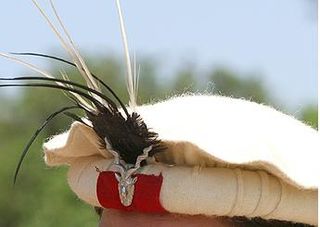
The Dardic languages, or Hindu-Kush Indo-Aryan languages, are a group of several Indo-Aryan languages spoken in northern Pakistan, northwestern India and parts of northeastern Afghanistan. This region has sometimes been referred to as Dardistan.

Kargil district is a district in Indian-administered Ladakh in the disputed Kashmir-region. It is one of the two districts comprising the Indian-administered union territory of Ladakh. The district headquarters are in the city of Kargil. The district is bounded by the Indian-administered union territory of Jammu and Kashmir to the west, the Pakistani-administered administrative territory of Gilgit–Baltistan to the north, Ladakh's Leh district to the east, and the Indian state of Himachal Pradesh to the south. Encompassing three historical regions known as Purig, Dras and Zanskar, the district lies to the northeast of the Great Himalayas and encompasses the majority of the Zanskar Range. Its population inhabits the river valleys of the Dras, Suru, Wakha Rong, and Zanskar.
Dah and Hanu are two villages of the Brokpa of the Leh District of the Indian union territory of Ladakh. Until 2010, these were the only two villages where tourists were allowed to visit out of a number of Brokpa villages.

Shina is a Dardic language of Indo-Aryan language family spoken by the Shina people. In Pakistan, Shina is the major language in Gilgit-Baltistan spoken by an estimated 1,146,000 people living mainly in Gilgit-Baltistan and Kohistan. A small community of Shina speakers is also found in India, in the Guraiz valley of Jammu and Kashmir and in Dras valley of Ladakh. Outliers of Shina language such as Brokskat are found in Ladakh, Kundal Shahi in Azad Kashmir, Palula and Sawi in Chitral, Ushojo in the Swat Valley and Kalkoti in Dir.

The pakol or pakul is a soft, flat, rolled-up, round-topped men's cap, usually worn in Afghanistan and Pakistan. It is typically made of wool and found in a variety of earthy colours, such as brown, black, grey, ivory, or dyed red using walnut. The pakol is believed to have originated in Chitral, or Gilgit-Baltistan in Pakistan.

The Brokpa, sometimes referred to as Minaro, are a small ethnic group mostly found in the union territory of Ladakh, India around the villages of Dha and Hanu. Some of the community are also located across the Line of Control in Baltistan in the villages around Ganokh. They speak an Indo-Aryan language called Brokskat. The Brokpa are mostly Vajrayana Buddhist while some are Muslim.
Batalik is a village and military base in Ladakh, India, located in a narrow section of the Indus river valley, close to the Line of Control with Pakistan-administered Baltistan. It was a focal point of the 1999 Kargil War because of its strategic location between Kargil, Leh and Baltistan.

Dras, also known locally in Shina as Himababs, Hembabs, or Humas, is a town and hill station, near Kargil in the Kargil district of the union territory of Ladakh in India. It is on the NH 1 between Zoji La pass and Kargil. A tourist hub for its high-altitude trekking routes and tourist sites, it is often called "The Gateway to Ladakh". The government's official spelling of the town's name is "Drass".
Brokskat or Minaro is an endangered Indo-Aryan language spoken by the Brokpa people in the lower Indus Valley of Ladakh and its surrounding areas. It is the oldest surviving member of the ancient Dardic language. It is considered a divergent variety of Shina, but it is not mutually intelligible with the other dialects of Shina. It is only spoken by 2,858 people in Ladakh and 400 people in the adjoining Baltistan, part of Pakistan-administered Kashmir.

The Shina or Gilgitis are an Indo-Aryan ethnolinguistic group primarily residing in Gilgit–Baltistan and Indus Kohistan in Pakistan, as well as in the Dras Valley and Kishenganga Valley (Gurez) in the northern region of Jammu and Kashmir and Ladakh in India. They speak an Indo-Aryan language, called Shina and their geographic area of predominance is referred to as Shenaki.

Gurez, or Gurais, is a valley located in the high Himalayas, about 86 kilometres (53 mi) from Bandipore and 123 kilometres (76 mi) from Srinagar, to the north of the Kashmir valley. At about 2,400 metres (8,000 ft) above sea level, the valley is surrounded by snow-capped mountains. It has diverse fauna and wildlife including the Himalayan brown bear and the snow leopard. The Kishanganga River flows through the valley.
The Yashkun People or Yashkuns are a sub-group of the Shina, a Dardic-speaking ethnic group, most of whom reside in the Gilgit division of Gilgit-Baltistan and Chitral and Kohistan districts of Khyber-Pakhtunkhwa, Pakistan. They speak a Dardic language called Shina and are scattered throughout northern Pakistan. Most researchers assert that the Yashkun were immigrants to northern Pakistan from Central Asia. However, other authorities maintain that the Yashkuns were indigenous to northern Pakistan.
Dah is a panchayat village in the Leh district of Ladakh, India. It is the most prominent of all the Brokpa settlements, other than Dah, it has six hamlets: Biama(or phunder), Baldes, Sannit, Pardos, Lastyang and Dundur It is located east of Batalik in Aryan Valley of Indus river of Ladakh in the Khalsi tehsil.
Garkon is a panchayat village in the Aryan valley region located in the Kargil block of Kargil district, in a rural region of the Indian union territory of Ladakh. It is located east of Batalik in Aryan Valley of Indus river system.
The Palula, or Dangerik, also known as the Ashreti or Biori are an Indo-Aryan ethnic group who inhabit Ashret and parts of the former Chitral district, primarily in the south.
Chulichan is a village in the Kargil district of Ladakh, India, close to the Line of Control with Pakistan-administered Kashmir. It is populated by Shia Brokpas and Baltis. It is located east of Batalik in Aryan Valley of Indus river system near Batalik.

Aryan Valley, historically known as Dah Hanu valley or region, is an area comprising four villages — Dah and Hanu in Leh district, and Garkon and Darchik in Kargil district — and associated hamlets in Central Ladakh, India. Until its absorption into the Maryul kingdom, Brokpa chiefs wielded nominal autonomy in the region. The current name originated in the tourism industry c. 2010 to market the Brokpas, the Brokskat language speaking mostly-Vajrayana Buddhist local inhabitants, as being the primordial Aryans. The physical features of the Brokpa people, such as their tall stature, fair complexion, high cheekbones, and blue-green eyes, bear a resemblance to European characteristics.
Ganokh, locally called Ghanisha, is a village in the Kharmang District of Baltistan, Pakistan, close to the Line of Control with Indian-administered Ladakh. It is populated by about 800 Brokpas professing Shia Islam.

The Bono-na or Bono nah is an ancient festival of the Minaro ( Brokpa) people hosted alternatively between Dha and Garkon villages of the Aryan Valley region of Ladakh, India with a gap of a year. It is a festival of thanksgiving to their deities and gods for good crops and prosperity to the people and the land of Minaro.
Marol is a village situated near the confluence of the Suru River and the Indus River in the Kharmang District of Baltistan, Pakistan. It is close to the India–Pakistan border (LOC).










